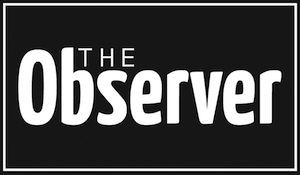Bringing New Meaning To End Of Life
Blue Ridge Hospice serves the souls of its patients, families, communities, and caregivers
By Jennifer Lee
“Turning to hospice is not about giving up. It’s about living your best possible life as well as you can and as long as you can with expert management of symptoms,” says Lisa Eiland, a registered nurse who has worked with Blue Ridge Hospice for almost 20 years. She and all her colleagues interviewed for this article speak with devotion and passion about their mission of providing care, counsel, and comfort to people in their last stage of life and their loved ones.
Walking into the offices of Blue Ridge Hospice (BRH) is far from a grim experience. Colorful art and lush plants line the walls and floors, an exuberant staff welcomes you, many volunteers cheerfully work stuffing envelopes or delivering meals to in-house patients, and, on this day, Chelsea the therapy dog greets everyone with a big tail wag. This is a place of healing for the spirit that serves thousands of patients and their families in Clarke, Frederick, Shenandoah, Page, Warren, Loudoun Rappahannock, and Fauquier counties and the City of Winchester.
Over the 30-plus years the BRH has been serving the community, its staff, services, and demands have grown exponentially. Founded by Gail Rodgers and Helen Zebarth in 1981, the organization has evolved from a small group of community leaders and volunteers with a tiny budget to a staff of over 200 employees, 900 volunteers, and a long list of outreach services ranging from medical care to music therapy to bereavement counseling.
The perception of hospice has evolved as well. People in the United States—both the medical community and public at large—have long held a fearful, distant approach to death and the dying. Children are sheltered from it, families don’t talk about it, and doctors are sworn to prolong life with any and all measures. The presence of hospice and the services it offers have allowed for a more caring, comforting, and conscious experience with the inevitable.
“Sometimes, the simple willingness to knock on the door and walk in has made all the difference for a family,” says Eiland. “I cannot express to you the unbelievable sense of privilege sitting with somebody at their bedside or standing in the back of a room full of family, surrounding someone they love. Presence. Bearing witness.”
Since the introduction of hospice to the United States in the mid 1970s, the medical community has gradually embraced the many benefits hospice provides both patients and their families. “It’s always getting better,” BRH President Ernie Carnivale says of the relationship between the hospital and hospice. “It’s about continual education and defining who plays specific roles. Our palliative care program has helped with that, too.“
An affiliate of BRH, Palliative Medicine Consultants opened in Winchester in 2008 to further bridge the gap between the hospital and hospice. The not-for-profit practice, whose team includes a physician, nurse practitioner, and licensed clinical social worker, supports its patients by working with pain and symptom management, helping define care goals and make complex care decisions, and coordinating care from various specialists. In 2013, Palliative Medicine Consultants conducted 920 consults and visits and its services are available to anyone at any age suffering from a serious, chronic, or life-threatening illness.
Critical Care
The best known and most important aspect of BRH’s mission is to provide end-of-life care to terminally ill patients and offer support for their families. This typically takes place in the patient’s home and involves professional medical staff and volunteers to help ease the dying process and provide physical, emotional, and spiritual comfort.
“The care is driven by the patient’s goals and supported by a team of highly specialized professionals that provide coordinated, interdisciplinary care to patients and families with complex needs. These include physicians, nurses, social workers, music therapists, chaplains, and volunteers,” said Eiland. “I can’t think of another nursing career that allows for such a collaborative approach and includes the care of the whole person and their family.”
In the fall of 2004, BRH opened an in-patient unit adjacent to its offices in the former Winchester Memorial Hospital on Cork Street in Winchester. The facility offers eight beds in pleasant, homey rooms for patients requiring a more acute level of hospice care than can be delivered in the home. Carnivale counts this among his proudest accomplishments since he started leading the organization 14 years ago. Working with Pat Bishop, vice president of clinical services at the Loudoun Hospital Center, and the BRH Board, he fulfilled his wish to create a place that offers 24-hour care to patients most in need or for those without a caregiver.
Carnivale’s enthusiasm and commitment to the mission of hospice is readily apparent in his easy smile and energetic demeanor, and he repeatedly credits the staff, volunteers, and community for the organization’s success. “When people receive hospice care, they live longer and better. The extra care and attention makes a big difference,” he said.
Beyond Medicine
In addition to quality care from a team of medical professionals, patients and their families are availed of a number of other services from BRH. In fact, the services have extended beyond patients to the general community. “It is ingrained in our mission to serve the community,” Carnivale said.
The Bereavement Department offers individual and group counseling to anyone struggling with loss. Programs like Camp Hope and Jammin Away the Blues for children, Teen Talk for adolescents, Music for the Soul, support groups for caregivers, and immediate support for schools that have experienced a traumatic incident are all available to anyone at no charge.
John Reese is one of three full-time bereavement counselors with BRH who administers his services through a variety of programs and says he is humbled by the work he does. “My reward in working with others is being able to be present with them during a difficult and transitional time and provide whatever support I can.”
A recently established program called Broken Silence is specifically designed for family and friends who have lost someone due to suicide. “We saw a need, not only within the hospice family, but the community,” Reese said. In some programs, such as this one, pre-registration and assessment is required in order to determine the most appropriate approach to counseling. “Everyone processes grief and loss in their own ways,” Reese explains.
Music therapists play a significant role in both patient care and the bereavement team and provide a number of programs depending on the needs and age of the person. “After an initial assessment, a plan of care is implemented that addresses specific difficulties a patient is experiencing, such as quality of life. The music therapists visit patients at their homes, in facilities, or at the Intensive Care Center where music is utilized to decrease or extinguish the difficulties the patient is having,” explains Beth Rudy, the Director of the Bereavement Department.
Merritt Navazio is one of four music therapists on staff, playing guitar for both hospice patients and bereavement support groups. In addition to his 4-year degree in music therapy, he completed a six-month internship with BRH, accrued 1200 clinical hours, and passed the exam to be a board-certified music therapist, as all BRH music therapists must be. He typically has a caseload of 25 to 30 people and “goes wherever the patients are,” he says, including homes, offices, schools, and hospitals.
“We create a peaceful environment that often extends to the relationship between the patient and family,” Navazio says. With a patient in respiratory distress, he will tailor music to match the breathing and gradually slow it down. Dementia patients who can’t speak can still sing. Grieving kids completely come out of their shells when putting their own words to pop songs. “It is a great honor to help people in this difficult time. There are many little gifts and special moments,” Navazio said of his work.
Chelsea the Golden Labrador is one star of BRH’s pet therapy program. She and her jolly owner/handler, Mary DeMott, have paid more than 250 visits to patients and families since they began volunteering in 2007. After she retired in 2004, DeMott knew she had to volunteer in some capacity. “Chelsea was the inspiration. Every dog needs a job and by the time she was ten months old, I knew what her job had to be. She was always extremely gentle and loves to be around people,” DeMott said.
Therapy dogs must pass a number of obedience and behavioral tests to become certified through Therapy Dogs International, an organization dedicated to the regulation, testing, selection, and registration of qualified dogs and handlers. In addition to visiting hospice patients and their families, Chelsea and DeMott go to the library twice a month to help children having difficulty reading and participate in Paws for People, an organization that provides therapeutic visits to anyone who might benefit from interaction with a pet.
DeMott tears up when explaining the effects of the volunteer work she and Chelsea do. “When Chelsea comes in the room and a patient is very close to death, the family says ‘Here’s a dog!’ and everyone gets a few moments of relief. I think 50 percent of the help is to the patient and 50 percent to the family,” she says.
As with any nonprofit organization, funding for BRH’s multiple programs presents an ongoing challenge. To meet part of that need, the organization now has six area thrift shops open to the public, offering everything from books to bedroom suites. The first store opened in Purcellville in 2004 and it remains the largest, in donations, sales, and space. All donations are from the community and approximately 70% of the offerings are women’s clothing, but one can outfit not only him or her self but also their children and home with the diverse selection of items.
“We offer clean, attractive, quality merchandise,” said Jacki Munn, Regional Director of Thrift Shop Operations. ‘Discover the Difference with Every Treasure’ is the stores’ tag line and the constantly rotating merchandise and attractive displays demonstrate that. “When the economy shifted a few years ago, our customers shifted. Once they saw what we had to offer, they returned. We believe in value,” Munn said.
Proceeds from the stores make up about 5 percent of BRH’s annual income and many unsold items are sent on to other local nonprofits such as the Red Cross, Social Services, and the Laurel Center. “The benefits stay in the community and people know everything is going to good causes,” said Linda Roberts, the Blue Ridge Hospice Community Liaison and a Clarke County resident.
“We have about 200 volunteers throughout the six stores and could not do this without them,” said Munn. “Everyone is vested in the cause and here for the right reasons.”
Another effort of the thrift stores is their intensive recycling program, which also accounts for about half of their income. Unsold items at the stores are sold by the pound to vendors who then ship to Mexico, Texas, and Canada. “We can now utilize practically everything,” said Roberts. “We were tipping dumpsters almost every day (before the recycling program), now it’s just once or twice a week. We wanted to take recycling to the next level. It really is a win-win.”
There are two thrift shops in Winchester, and one each in Berryville, Front Royal, Stephens City, and Purcellville. They are open for shopping and donation acceptance from 10am to 4pm Monday through Saturday.
Ernie Carnivale says the support of the community—through memorial donations, special events, bequests, grants, corporate gifts, and in-kind donations—is critical to the ongoing operations of BRH. Due to the recent federal government sequestration, Medicare reimbursements were cut by 2 percent, resulting in a $250,000 income loss. Over 85 percent of BRH’s patients are covered under Medicare.
“We are building an endowment to support our programs by developing the Blue Ridge Hospice Foundation,” said Carnivale. As well, BRH’s Butterfly Club, established in 2008, provides community residents and groups the opportunity to commit to a regular schedule of giving. Club members are recognized on the “Wall of Honor” and host and participate in house parties, concerts, and social events that raise funds for hospice.
Last year, BRH volunteers provided a cost savings of $786,636 with the donation of their time and services, and, in turn, BRH provided nearly $500,000 in charity care to patients unable to pay or without insurance for their hospice services.
The reach of Blue Ridge Hospice extends far into the community and touches many, many lives in a myriad of ways. Death may not be an easy thing to think about and the loss of our loved ones is always difficult, but it is comforting to know that there is a vibrant organization of dedicated staff, volunteers, and supporters to help in the process.
Eiland advises to “begin the hard conversations about end of life care. If you knew your time was limited, what would you want? What is left undone? Talk about choices and advanced directives. Making these decisions in advance could be one of the greatest gifts you give to those that love you, who may need to speak on your behalf someday.”
“People just come over to thank me for what hospice does,” says Roberts. “They say ‘We wish we’d called earlier.’ In the case of a terminally ill or grieving person in need, you can’t call us too soon.”
Blue Ridge Hospice is located on the fourth floor at 333 West Cork Street in Winchester. Phone is 540-536-5210 or 800-238-5678. Visit their website at www.blueridgehospice.org. For information on hospice in general, visit www.nationalhospicefoundation.org.













